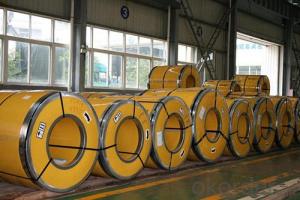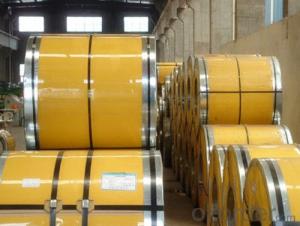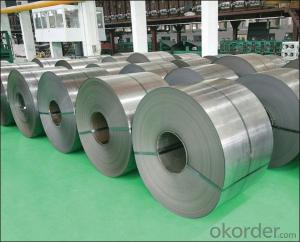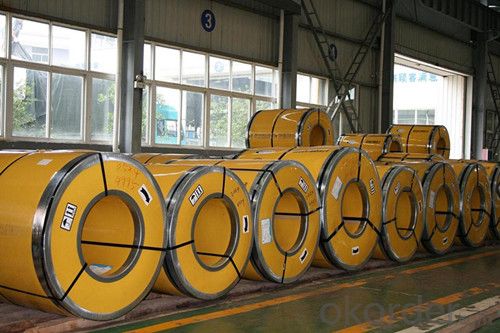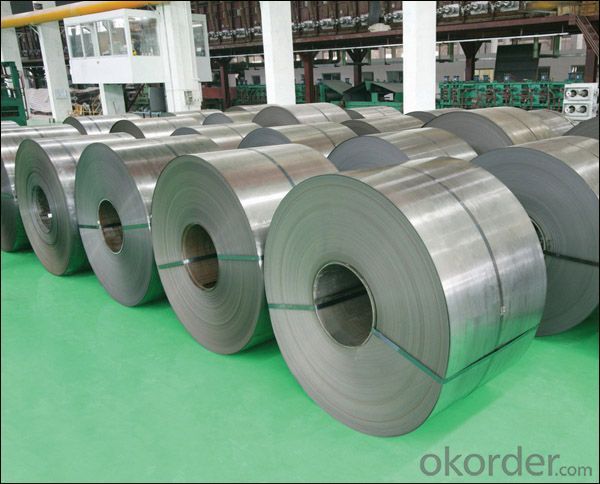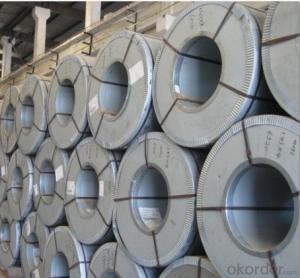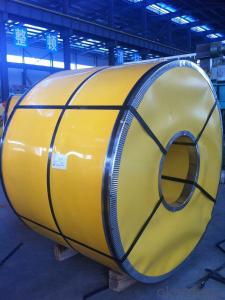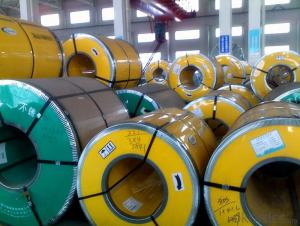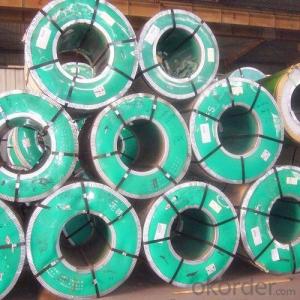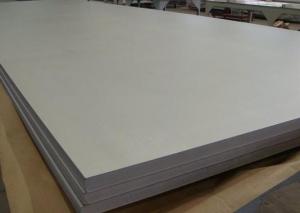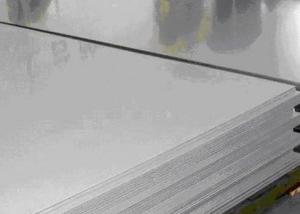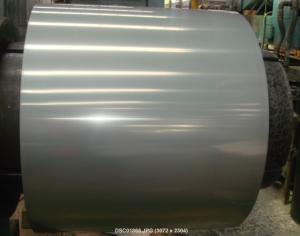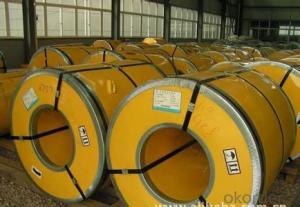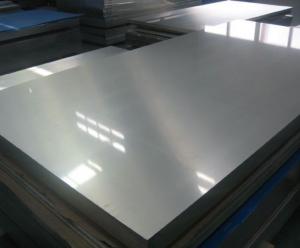Hot Rolled Stailess Steel Coil 300 Serious
- Loading Port:
- Tianjin
- Payment Terms:
- TT OR LC
- Min Order Qty:
- 25 m.t.
- Supply Capability:
- 100000 m.t./month
OKorder Service Pledge
OKorder Financial Service
You Might Also Like
Hot Rolled Stailess Steel Coil 300 Serious
1.Structure of Hot Rolled Stailess Steel Coil 300 Serious
Hot Rolled Stailess Steel Coil 300 Serious is one of the raw material of the cold rolled stainless steel strip, which can be used directly in many places. Stainless Steel (Stainless Steel) is short for acid-proof Stainless Steel, resistant to weak corrosive medium such as air, steam, water, or with a Stainless Steel grade.
2.Main Features of Hot Rolled Stailess Steel Coil 300 Serious
1) weldability: The purpose of the different requirement for welding performance are different.1 Kind of tableware generally do not require the performance of welding, even including some pot class enterprise. But the vast majority of products all need raw materials welding performance is good, like the 2 kinds of tableware, thermos flask, steel pipes, water heaters, water dispensers, etc.
2) Corrosion resistance The vast majority of stainless steel products for corrosion resistant performance is good, like a, 2 kinds of tableware, kitchen utensils and appliances, water heaters, water dispensers, etc., some foreign businessmen on corrosion resistance of products also do experiment: in NACL aqueous solution heated to boiling, after a period of time the best solution, wash and drying, weight loss, to determine the degree of corrosion (note: the product polishing, because of the sand cloth or sandpaper containing Fe, will cause the test surface rust spots)
3) Polishing performance In today's society stainless steel products in production after polishing the process commonly, when only a small number of products such as water heaters, water dispenser tank don't need polishing. So this will require materials polishing performance is very good. The factors influencing polishing performance mainly include the following: 1) raw material surface defects. Such as scratch, pitting, pickling, etc. (2) raw material problem. Hardness is too low, easy when polishing cast light (BQ), and the hardness is too low, the surface easily when deep drawing appear orange peel phenomenon, which affects the BQ. Relatively high hardness of BQ sex is good. (3) after deep drawing products, great deformation area surface will be a small black spots and RIDGING, thus affecting the BQ.
4) Heat resistant performance Heat resistant performance refers to the high temperature stainless steel can still maintain its excellent physical and mechanical properties. Carbon: the influence of carbon in austenitic stainless steel is formed strong and steady. Set the austenitic austenitic area and expand elements. Carbon formation of austenite is about 30 times that of the nickel, the ability of carbon is a kind of gap elements, through the solid solution strengthening can significantly increase the strength of the austenitic stainless steel. Carbon austenitic stainless steel can be improved in high concentration chloride (e.g., 42% MgCl2 boiling solution) in the performance of the resistance to stress corrosion. But, in the austenitic stainless steel, carbon is often seen as the harmful elements, this is mainly due to the corrosion of stainless steel used in some conditions, such as welding or heating by 450 ~ 850 ℃), carbon steel with chromium in forming high chromium Cr23C6 type carbon compounds which can lead to local chromium depletion, make steel corrosion resistance especially resistant to intergranular corrosion performance degradation. So. Since the 60 s of the development of new cr-ni austenitic stainless steel is mostly carbon content less than 0.03% or 0.02% of the ultra-low carbon type
5) Corrosion resistance When the atomic number of no less than 12.5% chromium content in steel, can make the steel electrode potential mutations, the negative potential to the positive electrode potential. To prevent electrochemical corrosion.
3. Hot Rolled Stailess Steel Coil 300 Serious Images
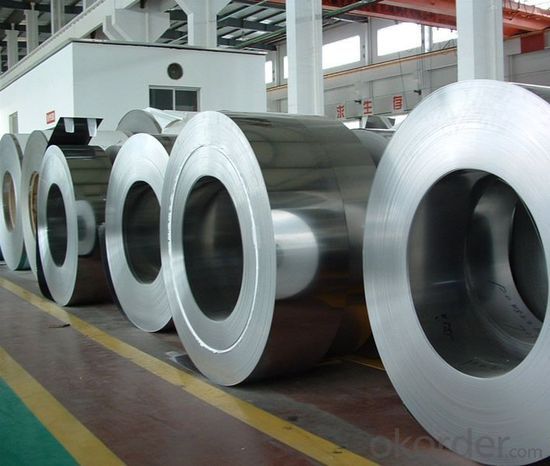
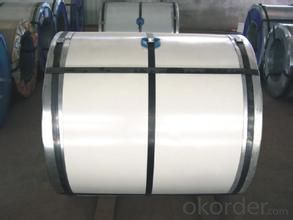
4. Hot Rolled Stailess Steel Coil 300 Serious Specification
The word "stainless steel" is not merely refers to a pure stainless steel, but said more than one hundred kinds of stainless steel industry, the development of each stainless steel has good performance in their specific applications. The key to the success of the first is to make clear purpose, and then determine the correct material. Related to architectural construction applications usually only six types of steel. They contain 17 ~ 22% chromium, good steel contains nickel. Add molybdenum can further improve the atmospheric corrosion resistance, especially containing chloride atmospheric corrosion resistance. Stainless steel often according to the state of organization can be divided into: martensite steel, ferritic steel, austenitic steel, austenitic (two-phase) - ferrite stainless steel and precipitation hardening stainless steel, etc. In addition, according to ingredients can be divided into: chromium stainless steel, chromium nickel stainless steel and chromium manganese nitrogen stainless steel, etc.
1) Ferritic stainless steel Chromium containing 15% ~ 30%. Its corrosion resistance, toughness and weldability with chromium content increases with the increase of chloride stress corrosion resistance is superior to other types of stainless steel, fall into this category of Crl7, Cr17Mo2Ti, Cr25, Cr25Mo3Ti, Cr28, etc. Ferritic stainless steel because of the high chromium content, corrosion resistance and oxidation resistance are relatively good, but the mechanical properties and process performance is poorer, more used to stress less acid structure and steel used as antioxidant. This kind of steel to withstand atmosphere, nitric acid and corrosion of the brine solution, and has good high temperature oxidation resistance, low thermal expansion coefficient, etc, used in nitric acid and food factory equipment, also can make work under high temperature parts, such as gas turbine parts, etc.
2) Austenitic stainless steel The title Chromium is more than 18%, still contain about 8% of the nickel and small amounts of molybdenum, titanium, nitrogen and other elements. Good comprehensive performance, corrosion resistant to a variety of media. Number of austenitic stainless steel is commonly used one cr18ni9, 0 cr19ni9, etc. In the Wc < 0.08% 0 cr19ni9 steel, steel grade is marked as "0". This class contains large amounts of Ni and Cr in steel, make steel in austenitic state at room temperature. This kind of steel has good plasticity and toughness, weldability and corrosion resistance and non-magnetic or weak magnetic, the corrosion resistance in oxidizing and reducing medium are good, used to make acid equipment, such as corrosion resistant containers and equipment lining, pipelines, nitric acid resistant equipment parts, etc., also can be used as the main body of watches and clocks jewelry stainless steel material. Austenitic stainless steel with solid solution treatment, the steel heating to 1050 ~ 1150 ℃, then water-cooled or air-cooled, for single-phase austenitic organization.
3) Austenitic, ferritic duplex stainless steel The advantages of both austenitic and ferritic stainless steel, and has the superplasticity. Austenite and ferrite The title Each accounts for about half of the stainless steel. In the case of contain low C, Cr content was 18% ~ 18%, Ni content at 3% ~ 3%. Some steel containing Mo, Cu, Si, Nb, Ti, N and other alloying elements. This kind of steel both austenite and ferrite stainless steel, the characteristics of compared with ferrite, plasticity and toughness is higher, no room temperature brittleness, intergranular corrosion resistance and welding performance were significantly increased, while maintaining a ferritic stainless steel of 475 ℃ brittleness and high thermal conductivity, has the characteristics of superplasticity. Compared with austenitic stainless steel, high strength and resistance to intergranular corrosion and resistance to chloride stress corrosion is improved obviously. Duplex stainless steel has excellent resistance to pitting corrosion performance, is also a kind of nickel and stainless steel.
4) Precipitation hardening stainless steel For austenitic or martensite structure matrix, and the number of precipitation hardening stainless steel commonly used such as 04 cr13ni8mo2al. It can pass the precipitation hardening (also known as the age hardening) dealing with the hard (strong) of stainless steel.
5) Precipitation hardening stainless steel For austenitic or martensite structure matrix, and the number of precipitation hardening stainless steel commonly used such as 04 cr13ni8mo2al. It can pass the precipitation hardening (also known as the age hardening) dealing with the hard (strong) of stainless steel.
5.FAQ of Hot Rolled Stailess Steel Coil 300 Serious
We have organized several common questions for our clients,may help you sincerely:
①How about your company?
A world class manufacturer & supplier of castings forging in carbon steel and alloy steel,is one of the large-scale professional investment casting production bases in China,consisting of both casting foundry forging and machining factory. Annually more than 8000 tons Precision casting and forging parts are exported to markets in Europe,
②How to guarantee the quality of the products?
We have established the international advanced quality management system,every link from raw material to final product we have strict quality test;We resolutely put an end to unqualified products flowing into the market. At the same time, we will provide necessary follow-up service assurance.
③What applications your products can have?
Kitchenware: tableware, cookware, Stoves…
Food packing: storage cans, food containers…
Construction: bridge, roofing, wall, decoration, bathroom accessories…
Precision instruments: electrical products, aerospace…
Others: automotive parts, machine building, chemical processing, farming…
- Q: Are stainless steel strips resistant to UV radiation?
- Stainless steel strips are generally resistant to UV radiation. The reason for this is that stainless steel has excellent corrosion resistance, which also applies to UV radiation. The presence of chromium in stainless steel creates a protective oxide layer on the surface, preventing significant damage or degradation from UV radiation. Stainless steel is commonly used in outdoor settings where it is exposed to sunlight and UV radiation, such as architectural structures, automotive parts, and marine equipment. This further demonstrates its resistance to UV radiation. However, it's worth noting that the specific resistance of stainless steel strips to UV radiation may vary based on the grade and quality of the stainless steel used, as well as the duration and intensity of the UV exposure.
- Q: Are stainless steel strips suitable for welding electrodes?
- Yes, stainless steel strips are suitable for welding electrodes. Stainless steel is a commonly used material in welding due to its high strength, corrosion resistance, and ability to withstand high temperatures. Stainless steel strips can be easily shaped into electrode forms and are compatible with various welding processes such as shielded metal arc welding (SMAW), gas tungsten arc welding (GTAW), and gas metal arc welding (GMAW). Additionally, stainless steel electrodes are known for their durability, long lifespan, and excellent arc stability, making them an ideal choice for welding applications in industries such as construction, automotive, and manufacturing.
- Q: Can stainless steel strips be electroplated?
- Certainly, it is possible to electroplate stainless steel strips. Electroplating involves the application of a slender metal layer onto an object's surface through the utilization of an electric current. While stainless steel is already resistant to corrosion, electroplating can augment its visual appeal, offer additional protection against wear and tear, and enhance its conductivity. The procedure encompasses submerging the stainless steel strip into a solution containing metal ions and subsequently applying an electric current, which results in the attraction and deposition of the metal ions onto the strip's surface. This technique can be employed with various metals, like gold, silver, nickel, or chromium, in order to achieve diverse aesthetic or functional qualities.
- Q: Can stainless steel strips be used in chemical storage tanks?
- Yes, stainless steel strips can be used in chemical storage tanks. Stainless steel is known for its corrosion resistance properties, which makes it suitable for storing various chemicals. It provides resistance to a wide range of corrosive substances, including acids, bases, and solvents. Additionally, stainless steel has excellent strength and durability, allowing it to withstand the harsh conditions often found in chemical storage tanks. Its inert nature also ensures that it does not react with the stored chemicals, thus preserving the integrity of the stored materials. Overall, stainless steel strips are a popular choice for chemical storage tanks due to their corrosion resistance, strength, and durability.
- Q: Can stainless steel strips be used in the medical device manufacturing industry?
- Yes, stainless steel strips can be used in the medical device manufacturing industry. Stainless steel is a preferred material in the medical industry due to its unique properties that make it suitable for various applications. It is corrosion-resistant, durable, and easy to clean, which is essential for ensuring the safety and hygiene of medical devices. Stainless steel strips can be used in the production of surgical instruments, orthopedic implants, dental tools, and other medical equipment. Additionally, stainless steel strips can be easily formed, welded, and sterilized, making them ideal for use in the medical device manufacturing industry.
- Q: Are stainless steel strips affected by UV radiation?
- Yes, stainless steel strips are generally not affected by UV radiation. Stainless steel is highly resistant to corrosion and does not undergo significant changes when exposed to UV radiation.
- Q: Are stainless steel strips suitable for brewery equipment?
- Indeed, brewery equipment can greatly benefit from the utilization of stainless steel strips. Renowned for its impeccable corrosion resistance, durability, and hygienic attributes, stainless steel stands as a favored material choice. Such strips may be employed in crafting a multitude of brewery equipment components like fermentation tanks, brewhouses, piping, and fittings. Thanks to its remarkable resistance against rust and corrosion, the equipment remains untainted, maintaining the utmost sanitation throughout the brewing process. Furthermore, stainless steel's effortless cleaning and upkeep are of paramount importance in guaranteeing the beer's quality and consistency.
- Q: Are stainless steel strips suitable for roofing applications?
- Yes, stainless steel strips are suitable for roofing applications. Stainless steel is highly durable, corrosion-resistant, and can withstand harsh weather conditions, making it an ideal choice for roofing. It offers excellent strength and longevity, ensuring long-term protection for buildings. Additionally, stainless steel's aesthetic appeal and low maintenance requirements make it a popular choice for various roofing projects.
- Q: What are the main properties of 111 stainless steel strips?
- The main properties of 111 stainless steel strips include high corrosion resistance, excellent heat resistance, good formability, and high strength. They also have good weldability and are suitable for various applications in industries such as automotive, construction, and aerospace.
- Q: Are stainless steel strips resistant to scaling and oxidation?
- Yes, stainless steel strips are resistant to scaling and oxidation.
Send your message to us
Hot Rolled Stailess Steel Coil 300 Serious
- Loading Port:
- Tianjin
- Payment Terms:
- TT OR LC
- Min Order Qty:
- 25 m.t.
- Supply Capability:
- 100000 m.t./month
OKorder Service Pledge
OKorder Financial Service
Similar products
Hot products
Hot Searches
Related keywords
